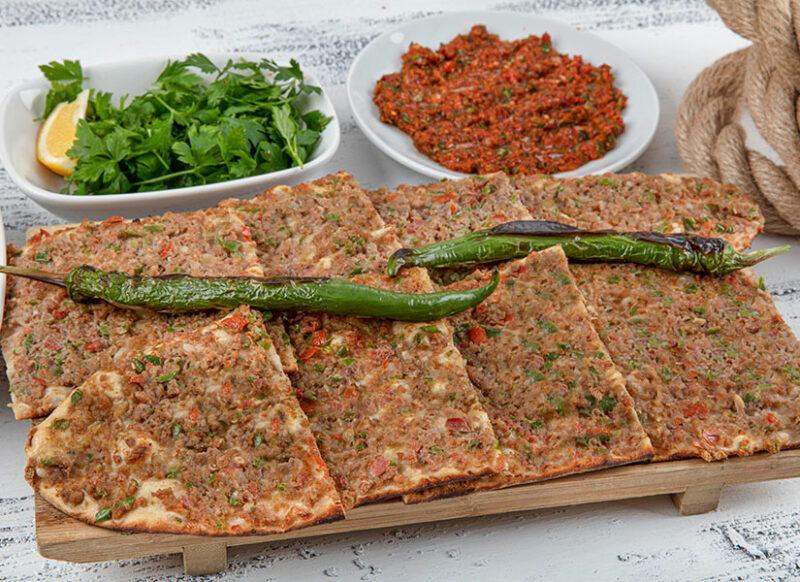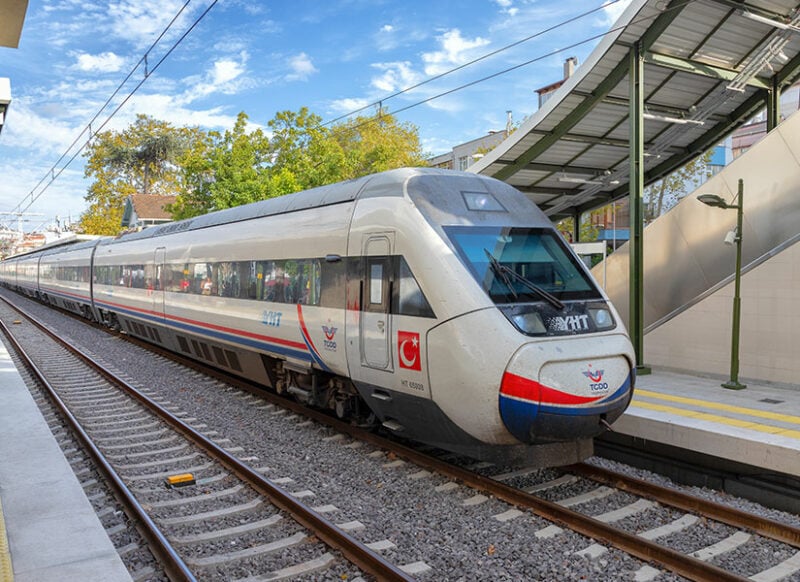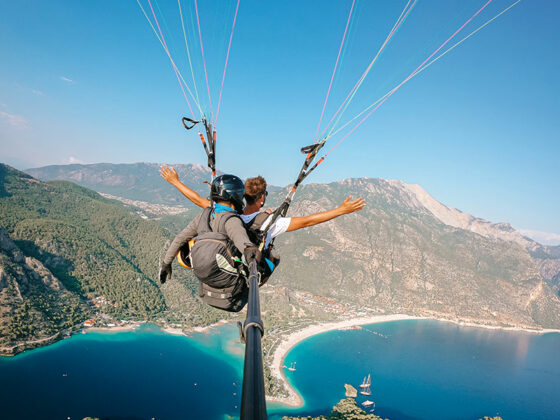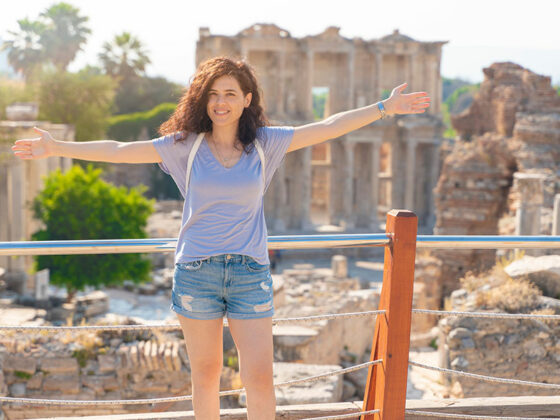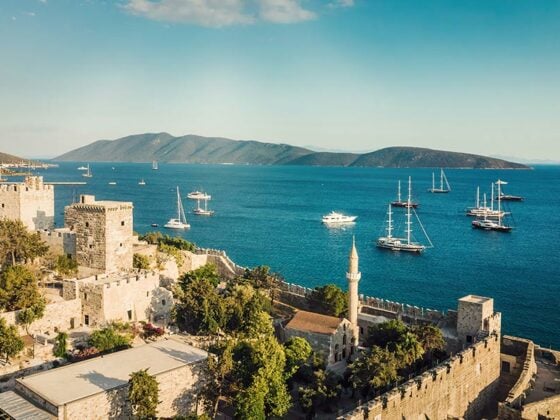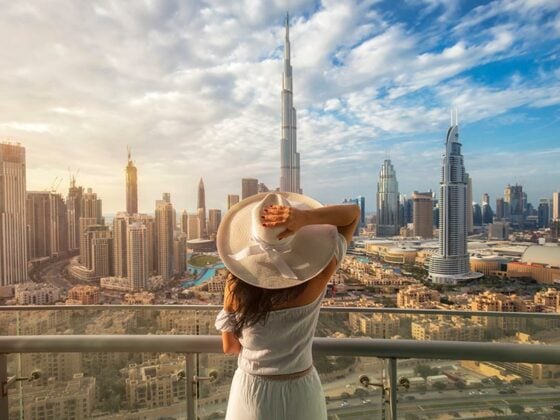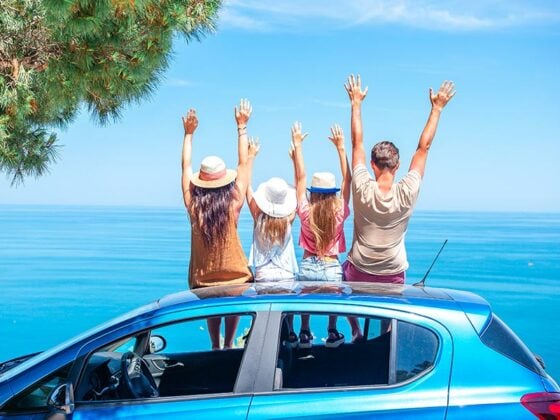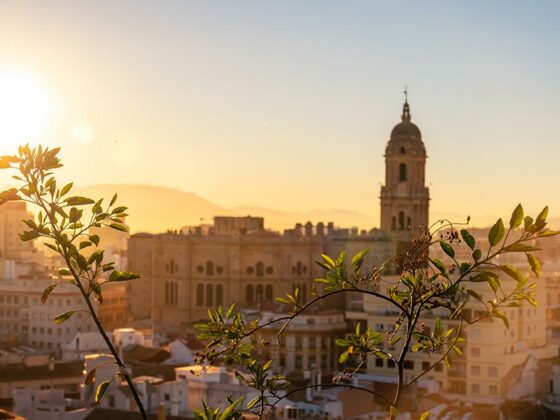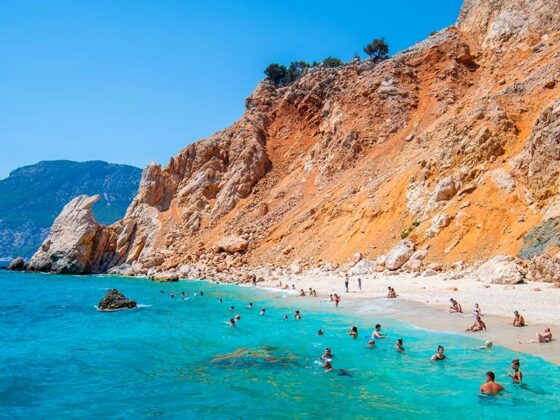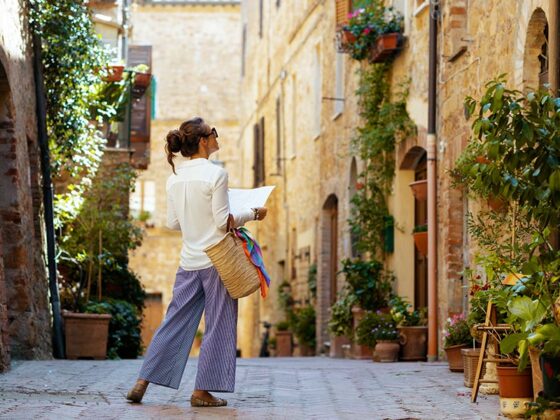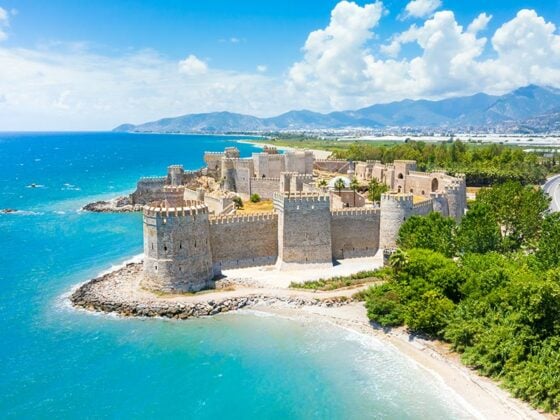Konya, home to the cradle of history, where you can enliven your palate with its delicacies, is now much closer to reach with high-speed train services. With daily service from Ankara, Konya is a place where you can also easily go from İstanbul thanks to the high-speed train. Thanks to its location in Central Anatolia, you can travel to Konya by bus, plane or private car, besides the high-speed train. If you want to spend a short holiday or weekend and explore the city to your heart’s content, the Konya hotels you are looking for await you in Odamax.
Historical Heritage and Çatalhöyük
Konya, which played host to many civilisations in Anatolia, was the capital of the Anatolian Seljuk State during the 12th and 13th centuries. Regional museums display many artefacts and ruins related to the prehistoric period, a sure delight to fascinate those who are interested in history and archaeology. Çatalhöyük, which is one of the most important sites in Konya, is one of the oldest settlements in the world. Thanks to the many extant ruins still available for viewing, Çatalhöyük has been on the UNESCO World Heritage list since 2012.
Çatalhöyük, standing as a 9000-year-old settlement, sheds light on the developments from Neolithic Age until today. In this mound, which is almost as old as human history, you are in the presence of the first traces of humanity. From the rooftops, you can gaze down on the houses below, in this prehistoric city where there are no streets. Make sure that you leave enough time to examine the artefacts unearthed from Çatalhöyük at the Konya Archaeological Museum.

Mevlânâ Museum and Tomb
Mevlânâ Museum and Tomb, one of the landmarks of Konya, should not be overlooked. The tomb of Mevlânâ Celâleddîn-i Rûmî, who influenced the world with his poetry and Sufi philosophy, has been turned into a museum which welcomes members of the Mevlevi (whirling dervish) Order and visitors from all over the world. The unique Mevlânâ Museum, with its green dome, can be visited free of charge every day. Additionally on site and available for visits are: the tomb of Mevlânâ’s mentor Shams, which is located in other parts of the lodge, and the tombs of other Seljuk sultans. If you are organising your trip in December, you can foresee an unforgettable Konya holiday by planning around the dates for Mevlânâ’s Vuslat Anniversary (Şeb-i Arûs) Ceremonies.
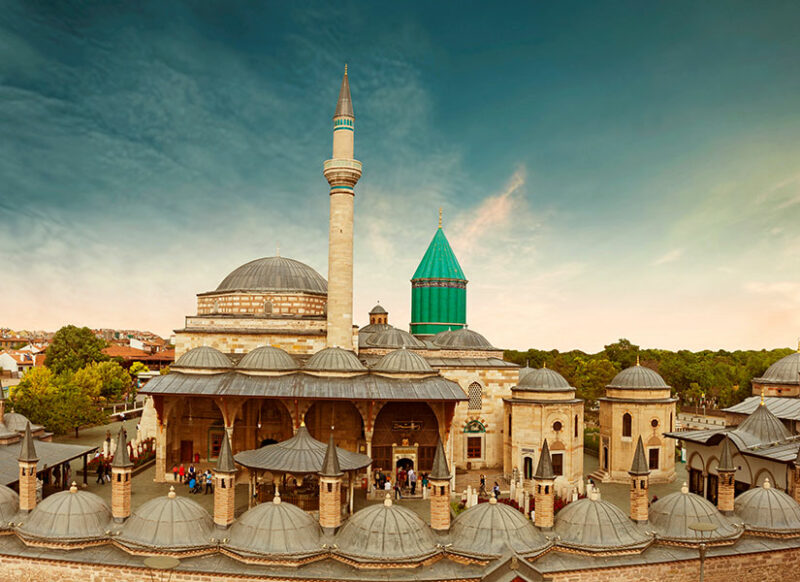
Mosques, Madrasas & Museums
Konya, one of the important centres of both the Seljuk and Ottoman Empires, is very rich in Turkish-Islamic works of both sacred and secular architecture. Structures such as Karatay Madrasah (Tile Works Museum), Aziziye Mosque, İnce Minareli Madrasah (Stone and Wood Works Museum), Sırçalı Madrasah (Museum of Gravestones), Alâeddin Mosque, Selimiye Mosque, Şems-i Tebrîzî Mosque, Eşrefoğlu Mosque, Sahibiata Mosque, İplikçi Mosque, Sadrettin Konevi Mosque, Kadı Mürsel Mosque, Kapu Mosque offer the best examples of the period in which they were built.
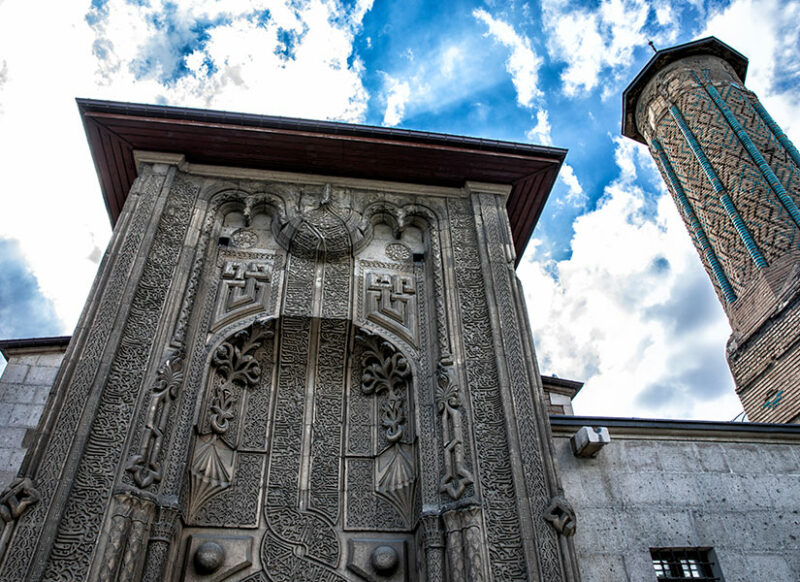
Konya Archaeology Museum and Konya Ethnography Museum are the museums where ethnographıc and archaeological artefacts from Konya’s prehistoric period and Konya culture are exhibited. Nasreddin Hodja, whose legendary fame as a trickster has spread to the world almost as much as Mevlâna’s own story, is in the spotlight at the Rüştü Bey Mansion in Akşehir. Akşehir Nasreddin Hodja Archaeology and Ethnography Museum displays treasured elements from Akşehir’s culture as well as room where lifelike wax figures represent stories from Nasreddin Hodja’s amusing stories. Separately, the building itself also arouses admiration for its architectural elegance. The Western Front Headquarters and Atatürk House museums are museums where the works of the War of Independence and the Republican period are exhibited.
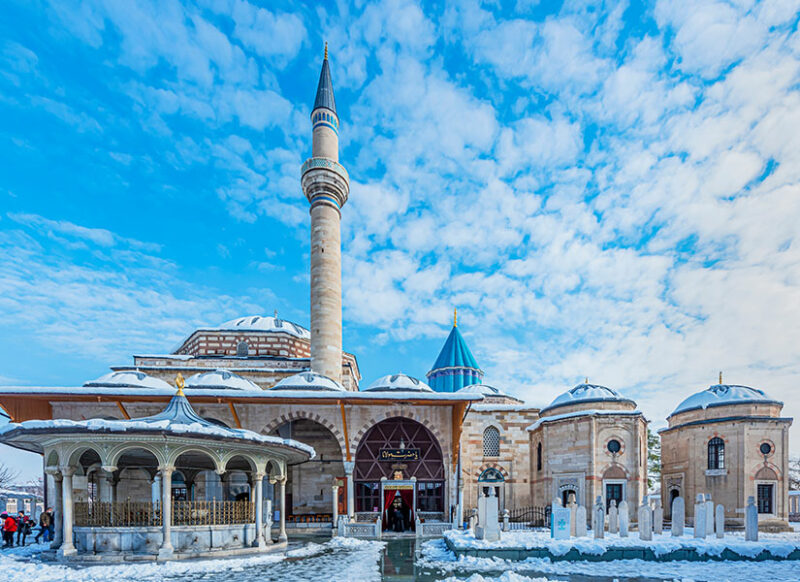
Natural Beauties: Lakes, Parks, Gardens
In addition to Konya Culture Park, Alâeddin Hill, Karatay City Park, where you can have a picnic and spend time in nature, there are various parks with different concepts in Konya. Kyoto Japanese Park was designed as a friendship park and was built in joint cooperation between the municipalities of Kyoto, Japan, and Konya. It is the largest Japanese garden in Türkiye. 80 Binde Devr-i Alem Park (Around the World in 80 Days Park) offers a colourful and entertaining world in three different sections with its miniatures featuring dinosaurs, fairy tale heroes and miniatures depicting fantastical and cultural elements. For a meal that’s off the beaten path, the repurposed Airbus A300 type aircraft has been converted into a restaurant located within the Turkish Stars Park. Their menu includes a taste “flight” which allows you to discover the local flavours of Konya. In the Konya Tropical Butterfly Garden, you can discover many butterfly species and observe every stage of their life cycle.
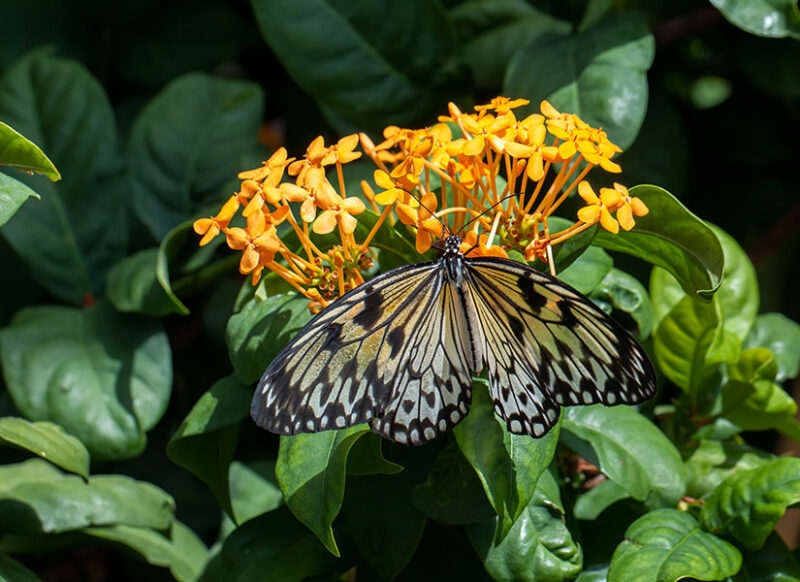
Tınaztepe Cave, Balatini Cave, Körükini Cave and Susuz Güvercinlik Cave are the focal points of both amateur and professional caving enthusiasts. Konya’s Beyşehir Lake, Salt Lake, Yerköprü Waterfall, Obruk Lake, Akşehir and Acıgöl are among the natural beauties of the region worth seeing. Should you wish a unique journey into Türkiye’s only desert, the Kayapınar Desert, is ready to host you. Meke Crater Lake, one of the interesting natural beauties of Konya, is known as the Nazar Boncuk (evil eye bead) of the world due to the appearance of the island inside.
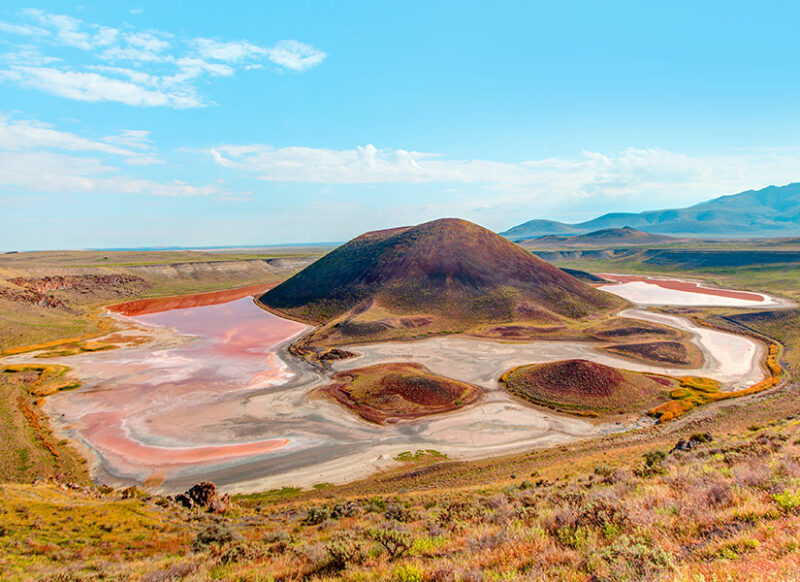
Sille Village and Churches
Sille Village is an old Greek village located 10 km from Konya. The village, which brings a smile to the face of history lovers, continues to challenge its nearly 5000-year-old history with its cobbled streets and stone bridges. Located on the historical Spice and Silk Road, the village was a frequent stopping point for merchants as well as Christians who stopped over on the way from İstanbul to Jerusalem. The Aya Eleni Church and Sille Siyata Monastery, built by Helena, the mother of the Byzantine Emperor Constantine, are among the remaining buildings of that period.
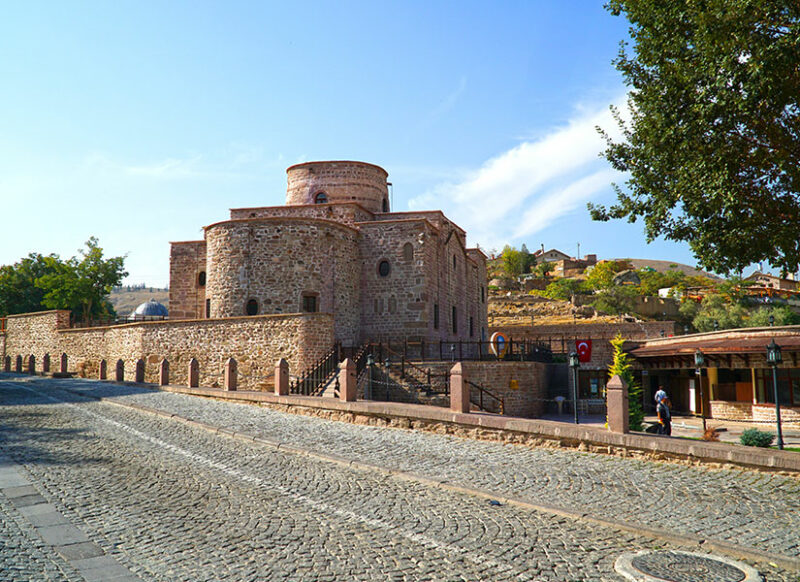
What to Eat in Konya?
The first thing that comes to mind when Konya is mentioned and must be eaten is etli ekmek (meat bread). You should definitely try the fırın kebabı (oven kebab) from lamb meat that will remain on your palate as much as the meat bread. Bamya çorbası (okra soup) establishes a throne in the hearts of even those who think that they do not like okra. Arabaşı soup and tirit, which tops iskender, are among the local delicacies worth trying in Konya. The shop for those who are tired of meat is Pideci Hasan Şendağlı, who is held in high esteem by Vedat Milor, with a lardy loaf. On the way back, don’t forget to take the delicious blue cheese and the ever-sweet Mevlânâ candy with you.
